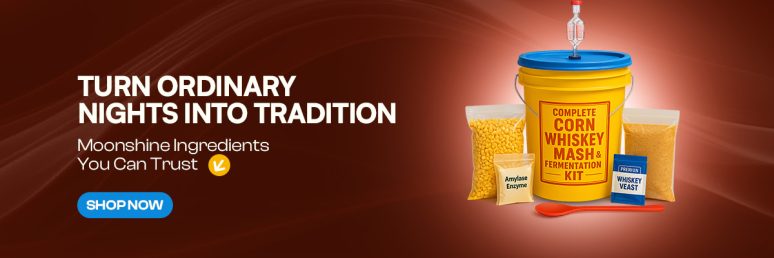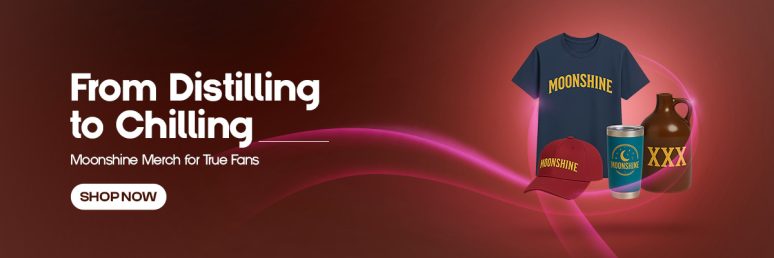Herbs For Infused Moonshine: Four Essential Herbs To Include

- Infusing moonshine with herbs creates unique flavor profiles that elevate your homemade spirits to craft-quality beverages
- Mint, lemon balm, rosemary, and thyme are the top four herbs that consistently deliver exceptional results in moonshine infusions
- Fresh herbs generally provide more vibrant flavors, but properly dried herbs can be successfully used during off-seasons
- The ideal infusion time varies by herb type, with delicate herbs like mint requiring shorter periods (3-5 days) than woody herbs like rosemary (7-10 days)
- Straining technique and timing are crucial factors that determine the clarity and balanced flavor profile of your final herbal moonshine
At a Glance: Herb-Infused Moonshine Essentials
The art of infusing moonshine with herbs transforms ordinary spirits into extraordinary elixirs with complex flavor profiles that rival commercial products. While fruit infusions often steal the spotlight, herbs offer subtler, more sophisticated notes that can elevate your homemade moonshine to new heights. The natural oils in herbs blend beautifully with the clean canvas of properly distilled moonshine, creating balanced beverages perfect for sipping or mixing.
Herbal infusions connect us to traditional moonshining methods that date back generations, when distillers would add local botanicals to smooth out harsh spirits and create signature flavors. Today, the practice of herb-infused moonshine continues to evolve as craft distillers and home enthusiasts experiment with creative combinations. Understanding which herbs work best and how to properly infuse them makes all the difference between a mediocre batch and a remarkable spirit worth sharing.
Transform Your Moonshine with These Four Powerful Herbs
%3Aformat(jpg)%2Fd2lnr5mha7bycj.cloudfront.net%2Fproduct-image%2Ffile%2Flarge_0a937f3c-52ca-4210-aace-e8c5ff19897f.jpg&w=750&q=75)
“Urban Moonshine Throat Spray, Herbs …” from foodisgood.com and used with no modifications.
Why Herbs Matter in Moonshine
Herbs contribute essential oils that bind with alcohol molecules, creating complex flavor compounds impossible to achieve through artificial flavoring. The right herbs can smooth harsh edges, add aromatic qualities, and introduce subtle flavor notes that develop and change as the spirit ages.
While countless herbs can technically be used in moonshine infusions, four stand out for their reliability, versatility, and impressive results. These herbs consistently deliver exceptional flavor profiles while being forgiving for beginners and responsive to experimentation for more experienced distillers. They’re also widely available, whether grown at home or purchased from markets, making them accessible options for anyone looking to enhance their spirits.
The extraction of flavors from herbs into moonshine depends on several factors: the proof of your spirit, infusion time, temperature, and the specific herb characteristics. Higher proof moonshine (100-120 proof) typically extracts flavors more efficiently than lower proof spirits, though anything above 80 proof will work. The herbs we’ll explore have been selected not just for their flavor contributions but for how well they perform in the infusion process itself. If you’re curious about the differences between spirits and moonshine, you can learn more about the difference between spirits and moonshine.
1. Mint: The Refreshing Game-Changer for Moonshine
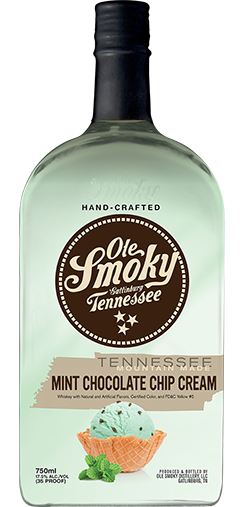
“Mint Chocolate Chip Whiskey | Ole Smoky” from olesmoky.com and used with no modifications.
Mint stands as perhaps the most versatile and forgiving herb for moonshine infusions, offering immediate aromatic appeal and a cooling sensation that balances the heat of high-proof spirits. Its natural menthol compounds create a pleasant tingling sensation when consumed, adding a sensory dimension beyond just flavor. Spearmint varieties tend to offer a sweeter, more rounded profile, while peppermint delivers a more intense, sharper cooling effect that can cut through the alcohol burn remarkably well. For those interested in exploring more about moonshine, you might want to check out this comparison between spirits and moonshine to better understand its unique characteristics.
Why Mint Works Magic in Moonshine
The magic of mint in moonshine comes from its high essential oil content, particularly menthol, which dissolves readily in alcohol and creates that signature cooling sensation on the palate. These oils not only infuse quickly but also help mask any harsh notes in less refined moonshine. The bright, refreshing character of mint-infused moonshine makes it especially popular in warm weather and provides an excellent base for mixed drinks where you want to lighten and brighten the spirit’s profile.
Mint-infused moonshine develops a fascinating complexity as it ages, with the initial sharp, green notes mellowing into a more rounded sweetness over time. This evolution makes mint infusions particularly interesting, as the same batch can offer different drinking experiences over several months. The natural sweetness that develops means you’ll often need less added sugar in cocktails, allowing more of the spirit’s character to shine through. For more ideas on enhancing your moonshine, check out these herbs for infused moonshine.
Fresh vs. Dried Mint: Which Is Better for Infusion
Fresh mint delivers superior results in moonshine infusions, providing brighter, more complex flavors than its dried counterpart. The volatile oils responsible for mint’s signature aroma and flavor begin to dissipate during the drying process, resulting in a less vibrant final product. When using fresh mint, look for bright green leaves without brown spots or wilting, and gently crush or bruise the leaves before adding them to release more oils.
That said, dried mint can still produce acceptable results when fresh isn’t available, particularly if the dried herb is relatively recent and properly stored. If using dried mint, expect to use approximately one-third the volume compared to fresh and be prepared for a slightly earthier, less bright flavor profile. Dried mint also requires slightly longer infusion times to fully release its more stubborn essential oils. For more tips on using herbs in moonshine, check out this guide on herbs for infused moonshine.
Growing your own mint ensures the freshest possible herb for infusions and provides endless supply given mint’s prolific growing habits. Varieties like ‘Kentucky Colonel’ spearmint and ‘Black Mitcham’ peppermint are particularly flavorful options that thrive in home gardens with minimal effort. Even a small pot on a windowsill can produce enough mint for several small-batch infusions throughout the growing season. For more on mint’s fascinating history, explore the secret history of moonshine.
Step-by-Step Mint Infusion Method
Creating mint-infused moonshine is remarkably straightforward, requiring just a few basic steps for excellent results. Start with approximately one cup of loosely packed, fresh mint leaves per quart of moonshine. Gently wash the leaves to remove any dirt or residue, then pat them completely dry—excess water can dilute your moonshine and potentially introduce unwanted bacteria. Lightly bruise the leaves by rolling them between your palms or giving them a few gentle crushes to release the essential oils before adding them to your jar of moonshine.
Seal your infusion container tightly and store it in a cool, dark place—not the refrigerator, as cold temperatures slow the extraction process. Shake the jar gently once daily to redistribute the herb and encourage even extraction. Sample your infusion after three days by taking a small taste; the mint flavor should be present but not overwhelming at this stage. Most mint infusions reach optimal flavor between 4-7 days, though this varies based on the mint variety and your personal preference.
When your desired flavor intensity is achieved, strain the liquid through a fine-mesh strainer or coffee filter to remove all plant material. For absolutely crystal-clear results, consider double filtering through a finer medium like cheesecloth followed by a coffee filter. The finished infusion will have a slight green tint if made with fresh mint, which is completely natural and indicates good essential oil extraction. Store your mint-infused moonshine in a sealed glass container away from direct light to preserve its vibrant flavor profile.
Perfect Pairings for Mint-Infused Moonshine
Mint-infused moonshine pairs magnificently with citrus elements—particularly lime—creating refreshing cocktails reminiscent of mojitos but with significant depth from the moonshine’s character. Try combining two ounces of mint-infused moonshine with fresh lime juice, a touch of simple syrup, and club soda for an elevated take on this classic combination. The cooling properties of mint also complement the sweetness of berries, making a blackberry and mint moonshine smash a summer standout.
2. Lemon Balm: The Citrus-Herbal Hybrid Your Moonshine Needs
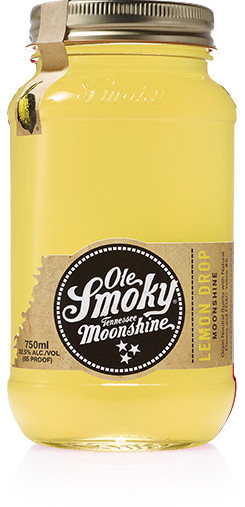
“LEMON DROP | Ole Smoky” from olesmoky.com and used with no modifications.
Lemon balm offers something truly special to moonshine infusions: natural lemony brightness without the acidity of actual citrus fruit. This member of the mint family (Melissa officinalis) provides a gentle, complex lemon flavor with subtle herbal undertones that harmonize beautifully with the backbone of good moonshine. Unlike actual lemon, which can sometimes create bitter notes when infused too long, lemon balm maintains its pleasant profile throughout extended infusion periods.
Lemon Balm’s Unique Flavor Profile
What makes lemon balm extraordinary for moonshine infusions is its complex aromatic profile that combines citrus notes with subtle honey-like sweetness and delicate herbal undertones. These layered flavors develop beautifully in alcohol, releasing compounds that pure lemon cannot provide. The resulting spirit offers a sophisticated brightness that elevates cocktails without overwhelming other ingredients.
The citral compounds in lemon balm not only contribute flavor but also help smooth the rough edges sometimes present in homemade moonshine. These natural compounds interact with the alcohol to create a more mellow mouthfeel while maintaining the essential character of your spirit. This mellowing effect makes lemon balm-infused moonshine particularly approachable for those new to drinking higher-proof spirits.
How to Harvest and Prepare Lemon Balm
Lemon balm reaches peak flavor just before flowering, when the essential oils are most concentrated in the leaves. Harvest in the morning after dew has dried but before the day’s heat causes oils to dissipate. The delicate oils in lemon balm begin to degrade quickly after cutting, making this herb ideal for immediate use in infusions rather than storage.
Unlike mint, which benefits from bruising, lemon balm should be handled more gently to prevent oxidation of its delicate oils. Simply remove the leaves from the stems and lightly tear larger leaves before adding to your moonshine infusion. Wilted or browned leaves should be discarded as they contribute bitter notes that can taint your infusion. For optimal results, aim for 1.5 cups of loosely packed fresh lemon balm leaves per quart of moonshine.
The Perfect Ratio of Lemon Balm to Moonshine
- For subtle background notes: 3/4 cup fresh lemon balm per quart
- For balanced everyday sipping: 1.5 cups fresh lemon balm per quart
- For pronounced lemon character: 2 cups fresh lemon balm per quart
- For dried lemon balm: Use half the amounts listed above
Lemon balm infuses relatively quickly compared to woodier herbs, generally reaching optimal flavor within 3-5 days. The infusion will develop a pale greenish-gold color when properly extracted, and you’ll notice the distinctive lemon aroma intensifying daily. Strain thoroughly once your desired flavor intensity is reached, as lemon balm leaves can break down and create sediment if left too long.
3. Rosemary: Bold Piney Notes for Complex Moonshine

“Recipes | 31st Select Spirits” from www.31stselect.com and used with no modifications.
Rosemary introduces a sophisticated, evergreen dimension to moonshine that creates remarkable depth and complexity. This woody, resinous herb contains potent essential oils that transform a simple spirit into something worthy of contemplative sipping. The piney, slightly camphorous character of rosemary provides a fascinating counterpoint to moonshine’s natural grain notes, creating a spirit that evolves on the palate from initial sip to finish.
Why Rosemary Creates Depth in Your Spirit
Rosemary’s magic lies in its high concentration of complex aromatic compounds—primarily pinene, cineole, and camphor—that dissolve gradually in alcohol to create layered flavor dimensions. These compounds interact with the ethanol molecules in ways that develop and change over time, resulting in an infusion that continues to evolve even after the herb is removed. The resinous oils in rosemary also contribute subtle texture changes to the moonshine, adding a faint viscosity that enhances the mouthfeel.
The woody characteristics of rosemary stand up beautifully to higher-proof moonshine, maintaining their integrity where more delicate herbs might be overwhelmed. This resilience makes rosemary an excellent choice for less refined moonshine that might benefit from some character balancing. The herbal complexity also provides impressive staying power in mixed drinks, allowing the rosemary notes to shine through other ingredients rather than disappearing.
The Right Amount of Rosemary (Without Overwhelming)
Rosemary’s intense flavor profile requires careful measurement to achieve balance without dominating your moonshine. For most batches, 3-4 sprigs of fresh rosemary (approximately 4-5 inches each) per quart of moonshine provides excellent flavor without overwhelming the spirit. This relatively small amount compared to other herbs speaks to rosemary’s potent nature. Those seeking a more subtle background note should reduce to just 2 sprigs, while brave souls looking for pronounced rosemary character might venture to 5 sprigs maximum.
The woodier nature of rosemary stems means they continue releasing compounds throughout the infusion period. Unlike leafy herbs that should be removed promptly once flavor is achieved, rosemary benefits from a longer, slower extraction. This gradual process allows the full spectrum of flavors to develop, from the initial bright, piney notes to the deeper, more complex resinous qualities that emerge with extended contact.
Rosemary Infusion Timing Guide
Rosemary requires significantly longer infusion times than delicate herbs like mint or lemon balm. Begin tasting your infusion after 5 days, but expect optimal results between 7-10 days for fresh rosemary. The woody stems and oil-rich needles release their essences gradually, with the most desirable balance often achieved around the one-week mark. Taste daily after the fifth day to monitor development, looking for the moment when the piney brightness is complemented by deeper, more aromatic notes.
When your infusion reaches the desired intensity, strain thoroughly using a fine-mesh strainer followed by a coffee filter to remove any small particles. Rosemary can leave behind tiny fragments that continue to infuse if not properly filtered, potentially leading to bitter notes developing over time. The resulting moonshine should have a faint golden hue and pronounced aromatic character that fills the nose before you even taste it.
Cocktail Ideas Using Rosemary-Infused Moonshine
Rosemary-infused moonshine shines in cocktails that play to its savory, herbaceous strengths. Try a wintery old-fashioned variation using 2 ounces of rosemary moonshine, a quarter ounce of maple syrup, and two dashes of orange bitters, served over a large ice cube with an expressed orange peel. The rosemary’s piney notes complement the maple warmth beautifully. For warmer weather, combine rosemary moonshine with fresh grapefruit juice and a splash of soda for a refreshing yet complex highball that balances sweet, bitter, and herbal elements masterfully.
4. Thyme: The Unexpected Hero of Herbal Moonshine
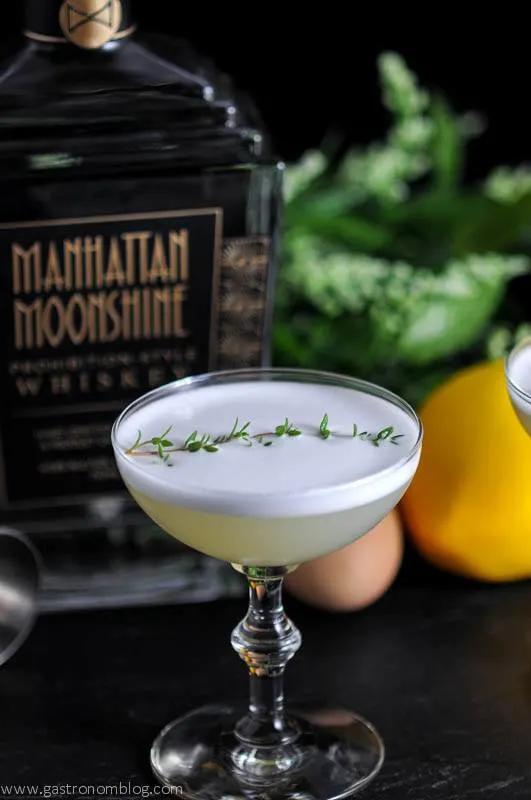
“Thyme to Shine – Moonshine Drink …” from www.gastronomblog.com and used with no modifications.
Often overlooked in favor of more prominent herbs, thyme delivers surprising complexity and remarkable versatility in moonshine infusions. This humble herb offers earthy, slightly floral notes with hints of pepper and citrus that develop beautifully in alcohol. Thyme’s subtle profile works particularly well in moonshine because it enhances rather than masks the spirit’s inherent character, creating a harmonious relationship between herb and alcohol.
Thyme’s Subtle Earthiness in Moonshine
What makes thyme exceptional for moonshine infusions is its ability to impart a gentle warmth and earthiness without overwhelming the base spirit. The thymol compounds present in the herb create a pleasant warming sensation that complements higher-proof spirits remarkably well. This warmth, coupled with thyme’s inherent sweetness, helps round out moonshine’s sharper edges while adding complexity rather than simply covering up any rough characteristics. For more ideas on enhancing your moonshine, explore these herbs for infused moonshine.
Thyme-infused moonshine develops fascinating layers that evolve on the palate—beginning with light lemon notes, transitioning to herbal sweetness, and finishing with a gentle peppery warmth. This progression makes it an ideal sipping spirit, especially when made with well-crafted moonshine that already has character of its own. The infusion also develops beautifully with time, continuing to mellow and integrate for several weeks after the herbs have been removed.
Best Thyme Varieties for Spirit Infusion
Common thyme (Thymus vulgaris) offers the most balanced profile for moonshine infusions, with just the right concentration of essential oils to flavor the spirit without becoming medicinal. Lemon thyme provides a brighter, more citrus-forward profile that works beautifully in summer-focused infusions. French thyme, with its more pronounced savory qualities, creates deeper, more complex infusions ideal for cooler weather enjoyment.
Regardless of variety, look for fresh thyme with vibrant green leaves and pliable stems—woody, dried-out stems indicate older herbs with diminished oil content. For most thyme varieties, use approximately 6-8 sprigs per quart of moonshine, slightly more than rosemary due to its more subtle flavor profile. Strip the tiny leaves from the woody stems before infusing to prevent any bitter notes from the stems entering your moonshine.
How to Pair Thyme-Infused Moonshine
Thyme-infused moonshine pairs beautifully with honey as a sweetener rather than simple syrup, creating a meadow-like flavor profile reminiscent of fine mead but with moonshine’s distinctive character. For an impressive signature cocktail, combine thyme-infused moonshine with honey syrup, lemon juice, and a splash of ginger beer, garnished with a fresh thyme sprig. The earthy, slightly savory qualities also make thyme moonshine a fascinating choice for culinary applications—try adding a small amount to pan sauces for poultry or game for remarkable depth of flavor. For more inspiration, explore these spices for infused moonshine to enhance your creations.
The Science Behind Successful Herb Infusions

“281,400+ Students Science Stock Photos …” from www.istockphoto.com and used with no modifications.
Understanding the chemistry behind herbal infusions helps elevate your moonshine from experimental to exceptional. The key active compounds in herbs—primarily essential oils and flavor molecules—are generally alcohol-soluble rather than water-soluble, making high-proof spirits ideal extraction mediums. These compounds bind with alcohol molecules in a process similar to making tinctures, creating stable flavor combinations that maintain their integrity over time.
Alcohol Proof Considerations
The proof of your moonshine significantly impacts extraction efficiency and final flavor profile. Higher proof spirits (100-140 proof) extract essential oils more thoroughly and quickly than lower proof options. However, extremely high proof (over 150) can actually damage delicate flavor compounds through over-extraction, sometimes pulling bitter components from herbs that would otherwise remain in the plant material.
For most herbal infusions, 100-120 proof moonshine provides ideal extraction without harshness. If your moonshine is significantly stronger, consider diluting it slightly with filtered water before infusing. Conversely, if working with lower proof spirits (80-90 proof), extend your infusion time by 30-50% to achieve comparable extraction, and expect a somewhat milder final result.
Temperature Effects on Flavor Extraction
While heat accelerates extraction, cold infusion preserves the brightest, most vibrant aspects of herbs. Room temperature (65-75°F) strikes the ideal balance for most herbal moonshine infusions, allowing steady extraction without thermal damage to delicate compounds. Avoid refrigeration during the active infusion period, as cold temperatures significantly slow the extraction process and can prevent full flavor development.
Light exposure degrades both alcohol and herb compounds, potentially creating off-flavors. Store your infusions in dark glass containers away from direct light, particularly during the active infusion period. If using clear glass jars, keep them in a cabinet or wrap them in brown paper to protect from light degradation. For more on enhancing your infusions, explore these spices for infused moonshine.
Single vs. Multi-Herb Infusions
While single-herb infusions offer purity and clarity of flavor, thoughtful combinations can create remarkable complexity. When combining herbs, consider both flavor affinity and infusion timing. Pair herbs that complement each other naturally, like rosemary and thyme (both woody herbs) or mint and lemon balm (both in the mint family). When creating multi-herb infusions, consider staggered additions—add longer-infusing woody herbs first, then introduce more delicate herbs later in the process to prevent over-extraction.
The ratio between different herbs is crucial when combining multiple varieties. Generally, reduce the quantity of each individual herb by about 25-30% when combining them, as flavors can amplify each other in unexpected ways. Document your combinations carefully so successful blends can be replicated in future batches. For more inspiration on herb combinations, check out these herbs for infused moonshine.
Strain Timing for Perfect Results
The moment you choose to strain your herbal infusion dramatically impacts the final product’s flavor profile. Strain too early, and you’ll have a thin, underdeveloped flavor; too late, and bitter compounds may overwhelm the pleasant notes you’ve worked to extract. Unlike fruit infusions, which generally benefit from longer extraction, herbs can quickly cross the line from perfect to problematic.
When straining, use progressively finer filtration methods for the clearest results—begin with a fine-mesh strainer to remove larger material, followed by cheesecloth for smaller particles, and finally coffee filters for absolute clarity. This multi-stage filtration prevents clogging while ensuring no plant material remains to continue infusing in the bottle. Once strained, allow your infusion to rest for 24-48 hours before final bottling, as this resting period allows any suspended microscopic particles to settle for even greater clarity.
3 Foolproof Recipes Using These Essential Herbs

“20 Best Moonshine Recipes to Make at …” from www.kimschob.com and used with no modifications.
These tested recipes provide excellent starting points for exploring herbal moonshine infusions. Each has been refined through multiple iterations to achieve balanced, approachable flavor profiles while maintaining the distinctive character of quality moonshine. These recipes scale easily for larger or smaller batches by maintaining the same proportions.
The key to success with these recipes lies in quality ingredients and patience during the infusion process. Taste your infusions daily once the minimum time has elapsed, as ambient temperature, herb freshness, and moonshine proof all influence optimal infusion duration. Trust your palate—when the flavor pleases you, it’s ready to strain regardless of what the recipe timeline suggests.
Document your process carefully, noting quantities, times, and tasting notes. These records prove invaluable when recreating successful batches or adjusting recipes to your personal preferences. Small variations in technique or ingredients can significantly impact the final product, making good notes essential for consistency across batches.
Summer Garden Moonshine (Mint + Lemon Balm)
Combine 1 cup fresh mint leaves (lightly bruised) and 1 cup fresh lemon balm leaves with 1 quart of 100-proof moonshine in a sealed glass jar. Infuse at room temperature for 4 days, shaking gently once daily. On day 4, strain through fine-mesh strainer lined with cheesecloth, then again through a coffee filter. Add 2 tablespoons of local honey dissolved in 2 tablespoons warm water (optional, for slight sweetness). Bottle and allow to rest for 1 week before enjoying for best flavor integration. This bright, refreshing infusion captures summer’s essence with balanced herbal notes and subtle sweetness.
Winter Fireside Spirit (Rosemary + Thyme)
Add 3 sprigs fresh rosemary and 6 sprigs fresh thyme (leaves stripped from stems) to 1 quart of 110-proof moonshine. Infuse in a sealed glass container for 7 days at room temperature, shaking gently every other day. On day 7, taste and continue infusing if stronger flavor is desired, checking daily. When satisfied with intensity, strain through progressively finer filters as described earlier. For a warming winter variation, add 1 tablespoon of cracked black peppercorns during the final 48 hours of infusion.
This sophisticated infusion offers complex herbal notes with a warming finish, perfect for sipping neat by the fire or incorporating into rich winter cocktails. The piney notes from rosemary harmonize beautifully with thyme’s earthy sweetness, creating a spirit that evolves on the palate with each sip. For more ideas on creating unique flavors, check out these herbs for infused moonshine.
The Perfect Herbal Blend (All Four Herbs)
Create a truly special infusion by combining all four herbs in a balanced profile: add 1/2 cup fresh mint leaves (lightly bruised), 1/2 cup fresh lemon balm, 2 sprigs rosemary, and 3 sprigs thyme (leaves only) to 1 quart of 100-proof moonshine. Infuse for 5 days, then strain and taste. If rosemary and thyme notes need strengthening, add 1 additional sprig of each and infuse for 2 more days before final straining. This harmonious blend offers incredible complexity with each herb contributing distinct notes that weave together into something greater than the sum of their parts—bright mint and lemon balm on the front palate giving way to deeper rosemary and thyme notes for a satisfying finish.
Take Your Herbal Moonshine to the Next Level

“Urban Moonshine Clear Chest Syrup …” from radiantlifecatalog.com and used with no modifications.
As you master these fundamental herbs, consider exploring advanced techniques like vapor infusions (suspending herbs in the vapor path during distillation) or custom aging with herb-infused oak chips. The combination of traditional herbal knowledge with modern distilling approaches opens endless possibilities for creating truly distinctive spirits. Whether you’re crafting small batches for personal enjoyment or developing signature recipes for sharing with friends, herb-infused moonshine connects you to generations of distillers who understood that the perfect spirit combines science, art, and a touch of natural magic from the garden. For even more exploration, Good Ol’ Moonshine offers additional recipes and techniques to expand your herbal infusion repertoire.
Frequently Asked Questions
The world of herb-infused moonshine generates many questions as distillers experiment with different techniques and ingredients. These frequently asked questions address the most common concerns and confusions to help you achieve consistent, high-quality results with your herbal infusions.
How long should I infuse herbs in moonshine?
Infusion times vary significantly by herb type and desired intensity. Delicate, leafy herbs like mint and lemon balm typically reach optimal flavor in 3-5 days, while woody herbs like rosemary and thyme usually require 7-10 days for full extraction. The proof of your moonshine also affects timing—higher proof spirits extract flavor more quickly. The best approach is to begin tasting after the minimum recommended time and strain when the flavor pleases your palate, recognizing that over-infusion risks extracting bitter compounds that can’t be removed later.
Can I use store-bought dried herbs instead of fresh?
Yes, dried herbs can work effectively for moonshine infusions, though they generally provide different flavor profiles than fresh. When using dried herbs, follow these guidelines for best results:
- Use approximately half to one-third the volume of dried herbs compared to fresh
- Expect longer infusion times (add 2-3 days to the recommended fresh herb timing)
- Choose recently dried herbs with good color retention and strong aroma
- Accept that some delicate top notes may be missing compared to fresh herbs
Dried herbs often provide deeper, more concentrated flavors with fewer bright notes. This characteristic makes them sometimes preferable for winter-focused spirits but less ideal for summer refreshers. For herbs like mint and lemon balm where the bright, fresh qualities are essential, dried versions will never quite match fresh results. For more insights on using herbs in your infusions, check out this guide on herbs for infused moonshine.
Store-bought dried herbs vary tremendously in quality and potency. Whenever possible, source from specialty spice shops with high turnover rather than grocery store varieties that may have sat on shelves for extended periods. The volatile oils responsible for flavor diminish over time, even in properly dried herbs. For those interested in using herbs in traditional recipes, check out this corn-based moonshine recipe.
Will herb-infused moonshine eventually go bad?
Properly prepared herb-infused moonshine doesn’t “go bad” in terms of becoming unsafe to consume, as the high alcohol content prevents microbial growth. However, the flavor profile will change over time, sometimes dramatically. In the first 1-3 months after preparation, most herbal infusions continue to improve as flavors meld and integrate. Beyond that window, delicate top notes may begin to fade while deeper background notes intensify.
To maximize shelf stability, store infused moonshine in tightly sealed dark glass bottles away from heat and light sources. Properly stored herbal infusions typically maintain their best drinking quality for 6-12 months, though many remain enjoyable beyond this timeframe with gradually evolving flavor profiles. If you notice significant color changes, development of cloudiness, or dramatic flavor shifts, the infusion has likely passed its prime drinking window.
Can I combine herbs with fruits in my moonshine?
Herb and fruit combinations create some of the most remarkable moonshine infusions, offering complex flavor profiles impossible to achieve through single-ingredient approaches. When combining herbs with fruits, consider both flavor affinity and infusion timing differences. Most fruits infuse more quickly than herbs and release substantial sugars and juice that can overwhelm subtle herbal notes. For best results, either infuse the herbs and fruits separately and then blend the finished infusions to taste, or add fruits after herbs have had several days head start for balanced extraction.
What proof moonshine works best for herbal infusions?
The ideal proof range for herbal moonshine infusions falls between 90-120 proof (45-60% alcohol). This range provides efficient extraction of essential oils and flavor compounds without the harsh over-extraction that can occur with extremely high-proof spirits. Moonshine below 80 proof may not fully extract some essential oils, particularly from woody herbs like rosemary, while proofs above 140 can pull bitter compounds that would otherwise remain in the plant material.
If your moonshine is significantly stronger than 120 proof, consider diluting it with filtered water to bring it into the ideal range before infusing. This dilution not only prevents over-extraction but also creates a more balanced drinking experience in the finished product. Remember that even 100-proof moonshine delivers significant alcohol impact, and extremely high-proof spirits can overwhelm the subtle complexities of your carefully crafted herbal infusions.
